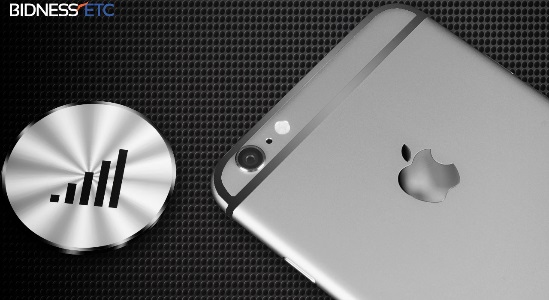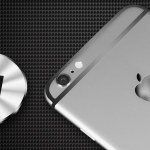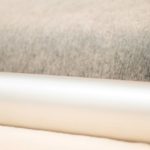The iPhone 6 comes with plastic strips that house the phone’s antenna, a much-criticized designing anomaly that Apple is not likely to feature on the latest iteration of the iPhone. The two strips of plastic are clearly visible on recent models such as the iPhone 5s, iPhone 5, or the iPhone 6; these little oddities take something away from the aesthetic appeal of the smartphone. Business Insider spotted a new patent that will do away with the strip entirely.
Apple Inc. (NASDAQ:AAPL) is working on a new way to get the radio waves without damaging connectivity. This was a prominent problem in smartphones a few years ago, whereby users experienced low or no signals if they held their phone a certain way, blocking the transmitter. The strips on the iPhone are coated with plastic to enable radio waves easy passage to and from the iPhone, and prevent them from being blocked by the metal exterior.
Apple will improve the overall design though, as the patent shows. The patent, published on Thursday, outlines how Apple will work on a new composite metal material that is not dissimilar to the anodized metal found in current iPhones. The new metal will allow radio frequencies to pass through, eliminating the need for the two plastic strips next to the camera and giving the iPhone a completely metallic look.
In the patent, Apple talks about how metal surfaces’ main purpose in smartphones today is to give “an aesthetically pleasing and durable look and feel,” while talking about multi-purpose components such as capacitive touch pads. The challenge Apple faced was to portray “a sleek and consistent appearance of a metallic outer enclosure for housing the various complex internal components.” The patent went on to explain how an alternate component to metal needed to be found since metal is not a good conductor of electromagnetic wave transmission.
The patent went on to point out how metal “is generally a high capacitive material,” which doesn’t work well with capacitive touchpads, and materials such as plastic and glass are not ideal for smartphones either. That is what drove Apple to come up with the composite material, which is explained in detail in the patent itself. Apple plans to use the new material on a number of products other than the iPhone. The material can coat the touchpad on Macs, which is not made of metal, and can even be used for touchscreens.
However, as always, filing patents is not a guarantee of a product being released incorporating elements of that patent. Hence, all this confirms is that Apple has taken consumer feedback seriously and is working on a way to remove the odd plastic stripes on the iPhone while ensuring that the smartphone features a smooth, slick look. It will be interesting to see if this new metal affects the iPhone or whether it turns out to be durable as the metal currently used to build the popular smartphones.
If it is not, Apple might end up with an iPhone that could potentially be prone to scratch marks ruining the smartphone’s form factor. But it is safe to say that if the new metal takes away from the iPhone’s current appeal, it will be used for the latest iteration – be it the iPhone 6S or the iPhone 7. Apple might even end up blending the new metal it is working on with the anodized metal already found on iPhones in just certain areas (such as a patch replacing the area where the plastic strips currently are).
Whatever the case is, it is good to see Apple come up with something new for the next edition of its flagship smartphone.














